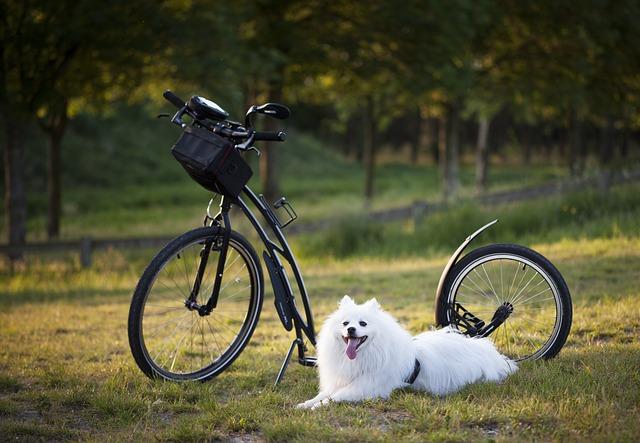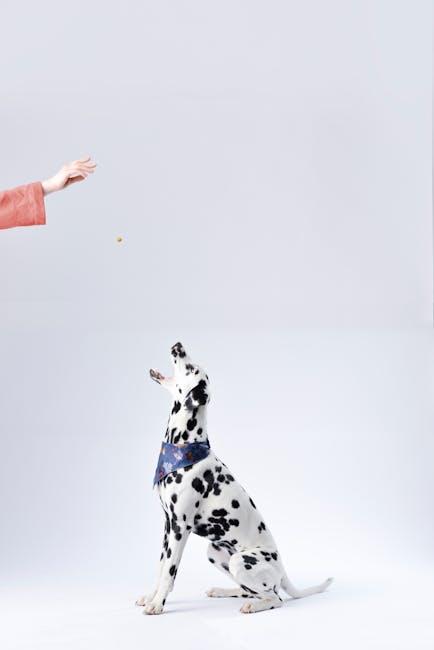Welcoming a furry friend into your home is an adventure filled with joy, laughter, and the occasional paw-induced chaos. One common challenge many dog owners face is teaching their enthusiastic pets not to jump on people. While a leaping, tail-wagging greeting might be endearing to you, it can be overwhelming—or even frightening—for visitors. Fortunately, with patience, consistency, and a sprinkle of positive reinforcement, you can guide your dog to exhibit more polite behavior. In this article, we will explore effective strategies to help your canine companion understand the importance of keeping all four paws on the ground, ensuring every encounter is a positive experience for both your pet and your guests. Let’s embark on this journey together, transforming boundless energy into gentle greetings.
Understanding Your Dogs Behavior and Motivation
Dogs often jump on people as a form of greeting or excitement, driven by their natural instincts and motivations. Understanding these behaviors is key to redirecting their energy positively. Dogs, like humans, are social creatures who crave interaction and affection. When they jump, they are typically seeking attention, whether it’s a pat on the head or verbal acknowledgment. Recognizing that this behavior stems from a place of wanting to connect can guide you in teaching them more acceptable ways to express their enthusiasm.
To effectively train your dog to stop jumping, consider the following strategies:
- Consistency is Key: Ensure that everyone in the household responds to jumping in the same way. Mixed signals can confuse your dog and hinder progress.
- Ignore the Jump: When your dog jumps, turn away and avoid eye contact. Wait for them to calm down before giving them the attention they seek.
- Reward Calm Behavior: When your dog approaches you without jumping, reward them with treats or praise. Reinforcing positive behavior encourages them to repeat it.
- Teach an Alternative Greeting: Train your dog to sit or offer a paw when greeting people. This gives them a structured way to interact and still receive the affection they desire.
By understanding and addressing the motivations behind your dog’s jumping, you can foster a harmonious relationship that respects both your dog’s instincts and your personal space.

Creating a Positive Training Environment
Building an environment where your dog feels secure and loved is crucial for effective training. Start by ensuring your dog associates training sessions with positive experiences. This means using positive reinforcement techniques like treats, praise, and affection. Avoid any form of negative reinforcement, as it can create fear and anxiety, hindering your dog’s ability to learn and trust.
- Consistency: Ensure everyone in the household is on the same page regarding the training commands and rules.
- Patience: Remember that learning takes time, and every dog progresses at their own pace.
- Clear Commands: Use simple and consistent commands to avoid confusing your dog.
By fostering a nurturing and supportive training atmosphere, you’re not just teaching your dog not to jump, but also strengthening the bond between you and your furry friend. Embrace the journey with patience and empathy, and celebrate the small victories along the way.

Effective Techniques to Discourage Jumping
Training your dog to keep all four paws on the ground can be a rewarding experience for both you and your furry friend. Here are some effective techniques to consider:
- Consistency is Key: Make sure everyone in your household is on the same page. Use the same commands and rewards to reinforce positive behavior, ensuring your dog understands that jumping is not acceptable.
- Ignore the Jumping: Dogs often jump to get attention. By turning away and not making eye contact when they jump, you can communicate that this behavior won’t earn them the attention they seek. Once they have all four paws on the ground, reward them with a treat or affection.
- Teach an Alternative Behavior: Encourage your dog to sit instead of jump. When they approach you, ask them to sit and only reward them when they comply. This redirection not only discourages jumping but also reinforces the sit command.
By integrating these techniques into your daily interactions with your dog, you’ll create a more peaceful and respectful relationship, allowing your pet to greet people with calm and confidence.

Reinforcing Good Manners and Consistency
Establishing good manners in your dog requires patience, practice, and above all, consistency. When your furry friend gets overly excited and starts jumping, it’s crucial to remain calm and composed. Avoid reinforcing this behavior by not giving any attention—positive or negative—when they jump. Instead, turn your back or walk away, showing them that this action will not earn your affection. Once your dog settles down, reward them with a treat or praise to reinforce the behavior you want to see. Consistency in your responses will help your dog learn what is expected of them.
Consistency is key when training your dog. Here are a few tips to ensure everyone involved in the dog’s life is on the same page:
- Communicate with family and friends: Make sure everyone knows the rules and follows them. Consistent messages from all parties help reinforce the training.
- Set clear boundaries: Define what behaviors are acceptable and which are not. Use clear commands like “sit” or “off” and ensure everyone uses the same language.
- Practice regularly: Short, frequent training sessions are more effective than sporadic, lengthy ones. Consistent practice helps reinforce learning and strengthens your bond.
With time and a steadfast approach, your dog will learn to greet people politely, making interactions more enjoyable for everyone.

